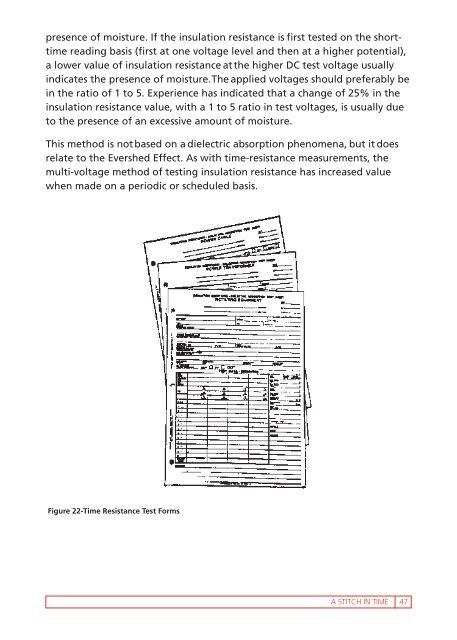“A Stitch in Time...”
You also want an ePaper? Increase the reach of your titles
YUMPU automatically turns print PDFs into web optimized ePapers that Google loves.
presence of moisture. If the <strong>in</strong>sulation resistance is first tested on the shorttime<br />
read<strong>in</strong>g basis (first at one voltage level and then at a higher potential),<br />
a lower value of <strong>in</strong>sulation resistance at the higher DC test voltage usually<br />
<strong>in</strong>dicates the presence of moisture. The applied voltages should preferably be<br />
<strong>in</strong> the ratio of 1 to 5. Experience has <strong>in</strong>dicated that a change of 25% <strong>in</strong> the<br />
<strong>in</strong>sulation resistance value, with a 1 to 5 ratio <strong>in</strong> test voltages, is usually due<br />
to the presence of an excessive amount of moisture.<br />
This method is not based on a dielectric absorption phenomena, but it does<br />
relate to the Evershed Effect. As with time-resistance measurements, the<br />
multi-voltage method of test<strong>in</strong>g <strong>in</strong>sulation resistance has <strong>in</strong>creased value<br />
when made on a periodic or scheduled basis.<br />
Figure 22-<strong>Time</strong> Resistance Test Forms<br />
A STITCH IN TIME 47



